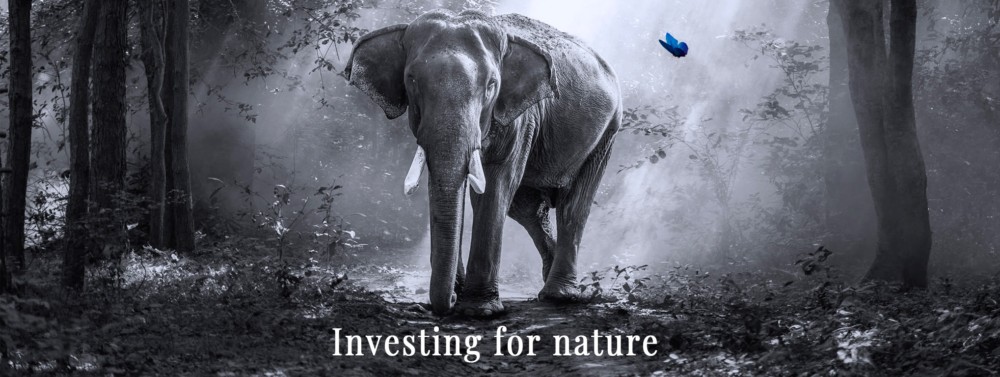
Kangaroo hide, or “k-leather” as it’s known in the athletic footwear industry, is still in high demand due to certain shoe manufacturing companies.
So while Australia is still recovering from massive bushfires caused by poor environmental stewardship, kangaroos are still being hunted in their native habitats – although many are particularly vulnerable now, after being displaced by the fires. And they’re being hunted and killed in the name of athletic shoes – namely, soccer cleats.
For this reason, Karner Blue Capital (https://karnerbluecapital.com/), a socially responsible investment management firm, is calling on all major athletic footwear manufacturers to seek synthetic, cruelty-free alternatives to k-leather. Karner Blue’s president, Vicki Benjamin, would be happy to offer insights into their investment strategies, their industry research, and the outcomes they’re hoping for as a result of this outcry.
KBC’s ESG investment strategies are centered around the protection of our planet for future generations with a specific focus on preserving biodiversity, promoting environmental stewardship, and improving animal welfare. Their goal is to provide sustainable and responsible investment products that enable investors who care about the treatment of animals, the degradation of their habitats, and the planetary risks posed by biodiversity loss to align their investments with their values.
This Strategy seeks long-term growth of capital and dividend income by investing in global companies that supply momentum to the future realization of a plant-based economy by promoting or innovating animal-free, environmentally-friendly products while seeking to avoid animal cruelty and the exploitation of animals through the implementation of appropriate animal-centric policies and procedures.
VFC has a KBC Impact Score of 2.73, which exceeds the mean KBC Impact Score for the entire Textiles and Apparel Industry by more than one standard deviation.
“We consider the items bolded below to be especially significant for the promotion of biodiversity preservation,” states co-founder Andrew Niebler. “Compared to other companies in the industry, VFC is working hard to reduce the waste that it produces as well as waste that is generated after their clothing is discarded. Since textiles and apparel is the second largest producer of waste in the world, in analyzing this industry we place an emphasis on companies that are thinking out of the box and producing products made out of recycled materials as well as figuring out ways to recycle more materials and produce less waste”.
- VF has two publicly available policies that address deforestation – the Animal Derived Materials (ADM) and Forest Derived Materials (FDM) policies. Its ADM prohibits leather originating from cattle raised on farms in the Amazon Biome that have contributed to new Amazon deforestation. This effort is to protect the largest intact tropical rainforest in the world. Its FDM policy addresses loss of ancient and endangered forests and loss of biodiversity and habitat associated with deforestation and its effects on climate change. Additionally, the FDM policy minimizes deforestation risks through four actions: 1) Supporting programs to conserve ancient and endangered forests, 2) Prioritizing the use of certified sustainable sources, 3) Encouraging responsible forest management practices for suppliers, and 4) Reducing virgin material use and prioritizing recycled content materials. VF’s specific time bound goals address these strategies directly.
- VFC sources all of its down down and feathers from Responsible Down Standard (RDS) certified suppliers
- 90% of VFC’s wool is ZQ certified (recognized by ResponsibleWoolStandard). ZQ sheep graze on pastures in ‘free range’, extensive farming conditions in the high country hills of New Zealand, the outback of Australia, the green plains of South Africa or the mountainous terrain of South America. ZQ sheep are humanely treated, well fed, live natural and healthy lives, and not subjected to mulesing, which means the fibre is of the very highest quality and performance.
- The company has a goal to reduce the average impact of its key materials by 35% by 2025, and publicly discloses the GHG impacts of its top materials. The company has committed to sourcing 50% recycled nylon and polyester for its products by 2025.
- The company is leading on the innovation front, particularly related to Timberland’s Ground to Good program. Clothing in this line is made from plastic water bottle waste in Haiti.
- The company is also a leader in materials innovation, particularly The North Face’s vegan spider silk jacket material, ThermoBall Eco recycled synthetic insulation, and Bottle Source Collection (product of recycled plastic bottles from National Parks).
- About 40% of the company’s cotton comes from growers in the US who use some of the most advanced and efficient growing methods on earth. In the emerging cotton economies, the company is committed to certifying BCI, CMIA, or organic cotton by 2020.
- The company’s total waste diversion rate has increased from 65% in 2014 to 79% in 2016.
- The company’s North Face brand operates a recommerce website, a secondary marketplace for used goods. To help consumers deal with clothing waste, the company has instituted take-back programs in more than 150 European stores. Items collected through these schemes are either reused or recycled into new products, reducing the apparel and footwear waste streams. Since 2016 The North Face and Timberland have diverted over 10 tons of clothing from going to landfill.
- By 2030, VF commits that 100 per cent of its top nine materials, which account for approximately 90 per cent of its materials-related carbon emissions, will originate from regenerative, responsibly sourced renewable, or recycled sources.
KBC believes that the combination of innovation and problem solving, along with an unhesitating embrace of best practices when it comes to environmental and animal protection, can better position businesses for growth and success in today’s marketplace. Corporations also have a responsibility to apply their global reach and economic power to solve our planet’s sustainability challenges – and investors in those corporations should embrace their power to spur a societal transition to a world in which people learn to live in harmony with nature. This emphasis on the interconnectivity of the human and natural worlds is the hallmark of our approach and prompted us to become a Certified B Corporation, a signatory to the United Nations Principles for Responsible Investment, and one of the original 26 signers of the UN Finance for Biodiversity Pledge.
KBC employs a rigorous proprietary research process that seeks to identify companies that are leading their respective industries with respect to the treatment of animals and the protection of natural animal habitats, as these are key but often overlooked components in the fight to ensure the continued health and vitality of our planet. Our portfolios are managed using a Quality at a Reasonable Price (QARP) investment approach where the quality of a given company is assessed using a combination of growth, profitability, and balance sheet characteristics. Finally, we couple our investment strategy with targeted advocacy and corporate engagement strategies that seek to positively shape corporate decisions that impact biodiversity and animal welfare.
KBC’s Corporate Animal Blog is available at https://karnerbluecapital.com/the-corporate-animal/. Their blogs are helpful in understanding the wide scope of the issues that KBC seeks to consider when conducting its research.


Love the fact that we now have an investment vehicle that allows me to “put my money where my heart is”! I appreciate the work the fund is doing to invest in companies that are acting responsibly toward animals.